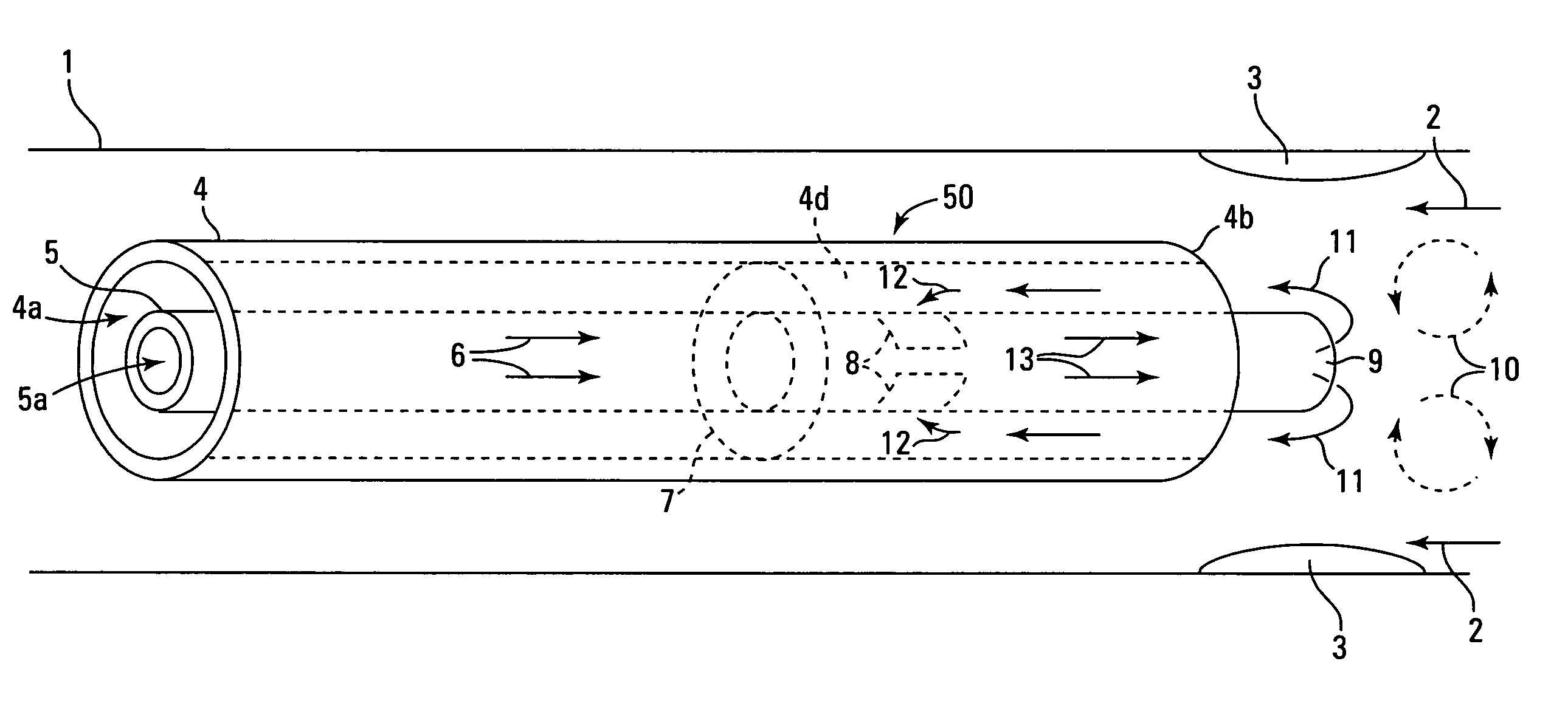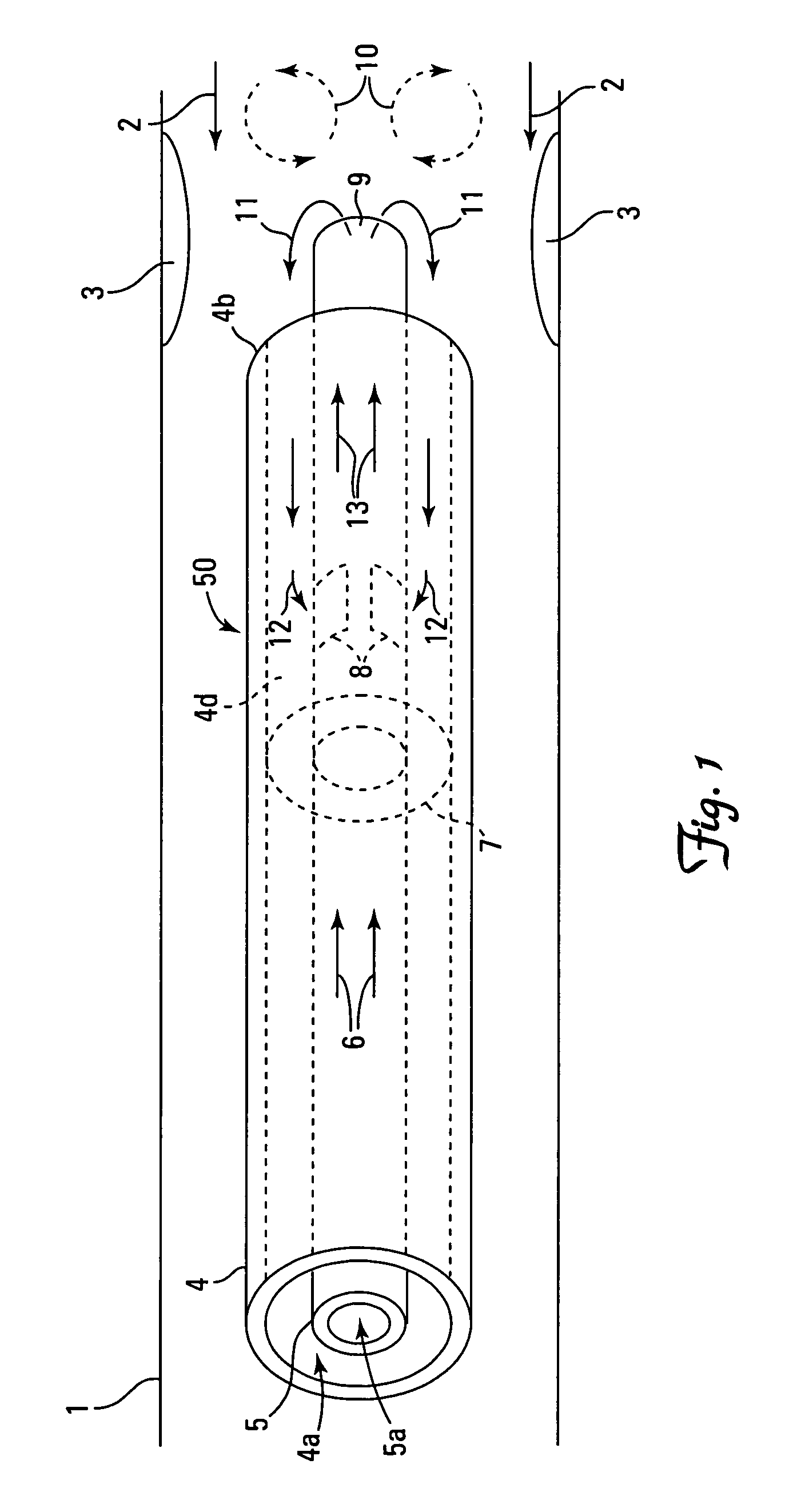Catheter systems for delivery of agents and related method thereof
a catheter system and agent technology, applied in the field of catheter systems for the delivery of agents, can solve the problems of no optimization of the recirculation of the infused agent, no catheter known to date, and many others, and achieve the effect of focusing the delivery of the agent and minimizing the non-targeted or specious delivery of the agen
- Summary
- Abstract
- Description
- Claims
- Application Information
AI Technical Summary
Benefits of technology
Problems solved by technology
Method used
Image
Examples
Embodiment Construction
[0024] A number of alternative structures are able to accomplish the above described effects and aspects of the invention. A catheter generally has a distal end (farthest from the point of insertion) and a proximal end (closest to the point of insertion), and has a fixed (or variable) number of outlets and inlets (e.g., vents, tubes, openings, port holes, lumen openings, etc.). The catheter is inserted into a body part of a patient using any means of imaging and guidance deemed appropriate by the clinician and is directed towards a targeted site. Where the intended use of the catheter is to deliver an agent into a blood vessel, the distal end may be directed towards the target site in either a blood flow parallel direction, a blood flow antiparallel direction, or a blood flow neutral direction. The structure of the catheter may desirably be configured to match the relative direction of blood flow (if any) to be encountered at the agent delivery site.
[0025] In the design of the cath...
PUM
 Login to View More
Login to View More Abstract
Description
Claims
Application Information
 Login to View More
Login to View More - R&D
- Intellectual Property
- Life Sciences
- Materials
- Tech Scout
- Unparalleled Data Quality
- Higher Quality Content
- 60% Fewer Hallucinations
Browse by: Latest US Patents, China's latest patents, Technical Efficacy Thesaurus, Application Domain, Technology Topic, Popular Technical Reports.
© 2025 PatSnap. All rights reserved.Legal|Privacy policy|Modern Slavery Act Transparency Statement|Sitemap|About US| Contact US: help@patsnap.com



